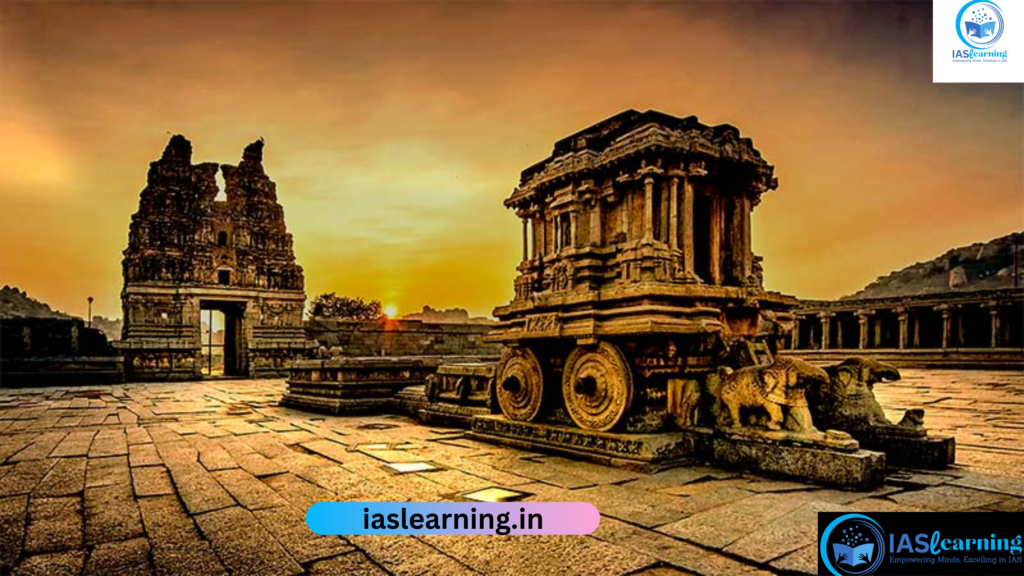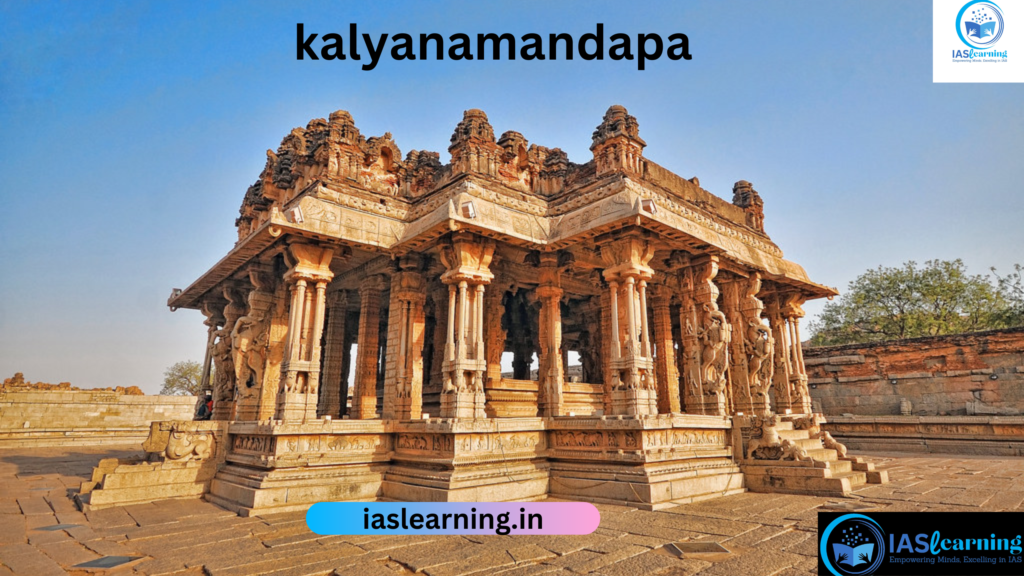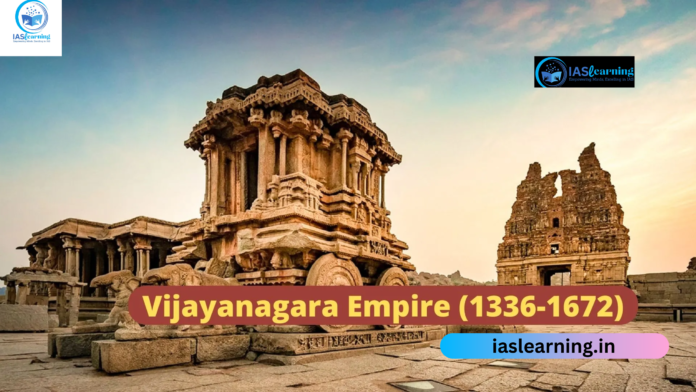VijayaNagara ruled between 1336 until 1647 AD.
Two brothers named Harihara and Bukka, who were in Muhammad-bin-Tughlaq’s army, founded the Vijayanagara state in 1336.
In 1336, they separated from the Delhi Sultanate and founded the autonomous state of Karnataka, with the capital city of Vijayanagar situated on the banks of the Tungabhadra River.
Inspiration:
Modern scholars and a saint named Vidyaranya assisted and encouraged Harihara and Bukka in the founding of their empire.
For more : American Revolution 1776, History, Causes, Timeline and its Impacts
History of the World Before 18th Century

Sources:
Literary Sources:
- By Vishvanatha Thanapati, Rayavachakam
- Robert Seawell’s book “The Forgotten History of the Vijayanagar Empire“
- The literary works in Kannada and Telugu, such as Manucharitram and Saluvabhyudayam, which were read by the Vijayanagar court, include social, political, and genealogical details.
International
- When Nicholo de Conti visited Vijayanagar during Devaraya 1’s reign, he provided intimate data.
- During Devaraya 2, Abdul Razzaq made a visit from Persia. He spoke about Hampi’s splendor as the capital city.
- Barbosa and Domingo Paes paid a visit during Krishnadevraya.
- Nuniz made a visit during Achyuthdevaraya’s reign.
inscriptions
- The primary material used to create the sangama dynasty’s family history is the Bitragunta inscription.
- The accomplishments and lineage of the Vijayanagar emperors are provided via the Srirangam copper plates of Devaraya II.
- Numerous inscriptions from the Krishnadevraya period on copper plates.
- Information on the cultural contributions of the Vijayanagar emperors may be found in the ruins of Hampi and other Vijayanagar monuments.
Political History
Vijayanagara was ruled by four different dynasties
- Sangama dynasty(1336-1486)
- Saluva dynasty(1486-1506)
Tuluva dynasty(1506-1565) - Aravidu dynasty(1570-1647)
For more : What is the concept of Nation and State?
What is Constitutionalism And Consitutional Morality
Sangam Dynasty:
- The first ruler was Harihara Raya. Conflict between the Bahamani and Vijayanagara began during his reign.
- Bukaraya ascended throne after harihara.
- Madurai was annexed by Kamparaya, Bukka’s son. In Sanskrit, this episode was documented as Madhuravijayam by Gangadevi, the kamparaya’s wife.
- He took Revatidweepa (Goa) prisoner.
- He established Hampi’s Pansupari Bazaar.
- Devaraya 1 was the first significant king; he was replaced by Harihara 2 and Devaraya subsequently came to power. He was the pioneer in building a dam over the Tungabhadra River.
- Feroz Shah 1, the Sultan of the Bahamas, beat Devarya 1.
- Deva Raya II was the best Sangama dynasty monarch.
- Muslims who were archers were enlisted by him.
- He was the first king of the Vijayanagaras to gather tribute from Cylons.
- The Sangama dynasty declined after his passing.
Saluva Dynasty:
- The Saluva dynasty’s strongest ruler was Narasimha Raya 2.
- This was the era in which Annamcharaya lived.
- Following Narasimha 2’s demise, Narasa Nayaka crowned his son Veeranarsimha as the heir.
- The Tuluva dynasty began to dominate under Veeranarasimha.
Tuluva dynasty:
- Following Veeranarasimha’s demise, Krishnadevaraya was crowned by Prime Minister Thimmarasu.
- Among this dynasty, Krishnadevaraya (1509–1529) was the greatest.
- He was an excellent administrator and leader. In addition to upholding law and order and combating Portuguese influence in the Deccan, he engaged in a number of wars with the independent kingdoms that emerged from the ashes of the Bahamani dynasty.
- The Adil Shahi armies of Bijapur were utterly destroyed by him before he stormed Gulbarga and freed the three Bahamani princes who were detained there. He aided them in regaining Gulbarga’s crown, and Krishna Deva assumed the title of Yavanarajya sthapanacharya for himself.
- In 1513 AD, he began his war in the east.
- Krishnadevaraya’s first fort to fall was Udayagiri.
- He defeated Orissa’s Prataparudra Gajapati.
- He married Tukkadevi, also known as Annapurnadevi, princess Tujapati.
- His final campaign was the Raichur campaign in 1520. He defeated Shah Ismail Adil.
- Krishnadevaraya and Portuguese ruler Alfanso de Alburque signed a treaty.
- Portuguese forces took Goa from the Sultan of Bijapur in 1510.
- Known as Andhra Bhoja, he was a major supporter of literature and the arts.
- At his royal court were eight Ashtadiggajas, distinguished scholars.
- After his son’s death, Krishnamacharya suffered a psychological collapse and died in 1529.
- Achyutadeva and Sadashivraya inherited the crown upon his demise.
- At the Battle of Talaikote in 1565, Rama Raya was defeated by the Bahaman confederacy, which was made up of the united troops of Bijapur, Ahmadnagar, Golkonda, and Bidar.
- Rama Raya was put to death and sent in jail. Vijayanagara, the city, was devastated. The Vijayanagara Empire was widely believed to have ended with this war.
- The Aravidu dynasty did, however, rule the Vijayanagar state for almost a further century.
Aravidu Dynasty:
- The three most significant kings of this dynasty were Venkata II, Thirumala, and Sri Ranga.
- Venkata II was Akbar’s contemporaries. He changed the nation’s capital to
- Sri Ranga III was the final monarch of the Vijayanagar empire.
- In the Battle of Vandavasi in 1647, Mir Jumla of Golconda defeated Sri Ranga.
- With this, the Vijayanagara dominion was destroyed.
Administration :
- They adhered to the established monarchy.
- In the kingdom, the king had the highest power. Additionally, he served as the army’s supreme commander.
- A council of ministers provided day-to-day administrative support to the monarch.
- The amaranayaka was one of the key features of the Vijayanagar government. This reminds me of the Delhi Sultanate’s iqta system.
- The Vijayanagara army’s commander was referred to in this arrangement as the nayaka. Every nayaka was assigned a space for administrative duties. The nayaka was in charge of increasing farming in his region.
- He maintained his army, horses, elephants, and military weaponry that he had to provide to the raya, or Vijayanagar monarch, using the taxes he gathered from his community.
- Every year, the amara-nayakas gave presents to the monarch in homage and made personal appearances at the royal court to show their support.
Revenue:
- The state’s primary source of income was land revenue.
- In general, it was one-sixth of the overall amount of output.
Society:
- There were reports of luxurious lifestyles.
- The most common materials for clothing were silk and cotton. People at that time utilized jewelry, flowers, and perfumes. Paes describes the affluent people’s exquisite homes and hordes of domestic help.
- It was decided to institutionalize prostitution.
- The system of temple dancers, or Devdasi, gained popularity.
- Sati practice is further reinforced.
- four castes: Sudras, Vaisyas, Kshatriyas, and Brahmins.
Religion:
- The family deity of the Sangama monarchs, who were mostly Saivaites, was Virupaksha. Some dynasties, however, were Vaishnavites.
- However, all of the rulers showed tolerance for different faiths. Borbosa made reference to the universal freedom of religion.
- Muslims had administrative jobs and were able to construct mosques and places of worship.
- Shunya sampadane is an assemblage of vachanas created during this era.(Vachanas, literally meaning “sayings” in Kannada, are beautiful poetry written in the language that were made famous by the Basavavanna-led Veershaiva movement).
Literature:
- Sanskrit, Kannada, Telugu language witnessed voluminous literature in Vijayanagar period.
- Few Sanskrit works are.
- Gangadevi wrote- Madhuravijayam
- Krishnadevarya wrote – usha parinayan, jambavanti kalyanam, madalasa charita.
- Guru vidyaranya wrote—Raja kalanirnaya
- Literary works in Kannada.
- Chamarasa wrote – prabhulingaleele
- Kanakadas wrote- Ramadhanacharite, nala charite, mohantarangini
- Kumaravyasa wrote – Karnataka katha manjari
- Purandardas — keertanas
- Literary works in Telugu
- Krishnadevaraya wrote – Amuktamalyada
- Allasani pedanna wrote – Manucharita
- Nandi timanna wrote – Parijathaparahana etc
- Ashtadiggajas– eight great poets of Telugu literature flourished in the court of Krishnadevaraya.
Architecture:


- They adopted the Dravidian architectural style, which was eventually given some distinctive touches and became known as the Vijayanagara style.
- Local firm granite was the preferred construction material because of its durability, much as it had been for the Badami Chalukyas.
- Strong enclosures encircle Vijayanagara temples, which are distinguished by elaborate pillared kalyanamandapa (marriage halls); tall rayagopurams (carved monumental towers at the temple entrance) constructed in the Chola style of wood, brick, and stucco; and embellished with life-size statues of gods and goddesses.
- During Krishnadeva Raya’s rule, the dravida style gained popularity and was used in many South Indian temples built during the next two centuries.
- Vijayanagar’s courtly architecture is mostly composed of mortar mixed with stone fragments and frequently features secular forms with arches, domes, and vaults influenced by Islamic architecture.
- The Virupaksha Temple in Hampi and the Hazara Rama temple of Deva Raya I are two well-known temples that represent the Vijayanagar architectural style.




